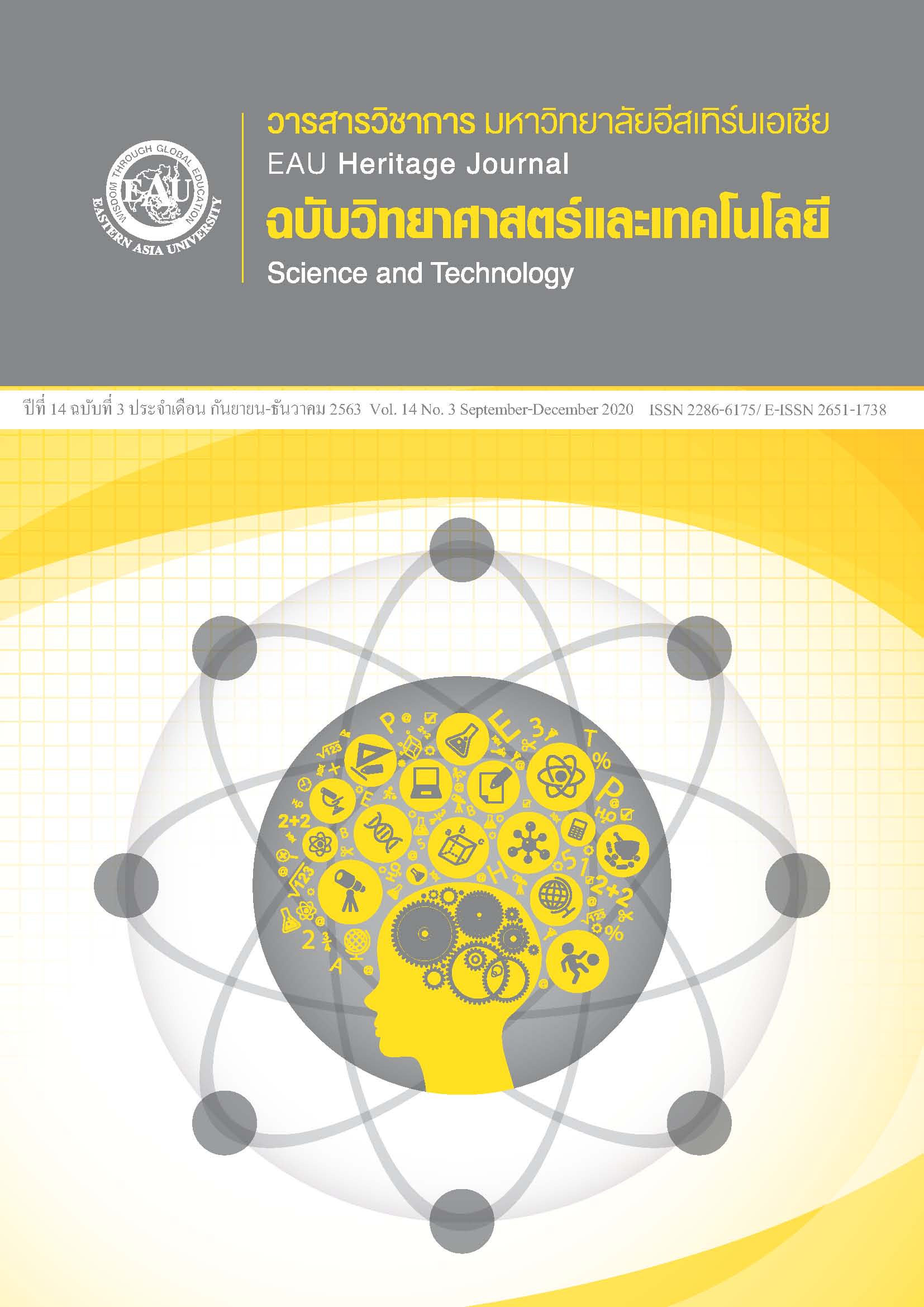เทคโนโลยีการออกแบบจำลองเสมือนจริงสำหรับการประเมินด้านการยศาสตร์
คำสำคัญ:
การยศาสตร์, แบบจำลองเสมือนจริง, การประเมินบทคัดย่อ
บทความนี้มีวัตถุประสงค์เพื่อนำเสนอแนวคิดในการนำประโยชน์ของเทคโนโลยีการออกแบบจำลองเสมือนจริงมาประยุกต์ใช้ในการประเมินด้านการยศาสตร์และการเลือกใช้ชุดคำสั่งหรือโปรแกรมประยุกต์ในการออกแบบให้มีประสิทธิภาพตรงตามหลักการยศาสตร์ เทคโนโลยีนี้ส่งผลทำให้เกิดความสะดวกสบายในการใช้งาน ลดความผิดพลาด ลดความเมื่อยล้าและปรับปรุงประสิทธิภาพการทำงานหรือผลกระทบทางสุขภาพของผู้ปฏิบัติงานที่อาจเกิดขึ้นระหว่างการประเมินหรือทดลอง นอกจากนี้เทคโนโลยีนี้ยังสามารถนำมาใช้เป็นแนวทางในการพัฒนาเครื่องมือและปรับปรุงภาพลักษณ์องค์กรให้ทันสมัยสำหรับการเลือกใช้เครื่องมือประเมินการยศาสตร์
เอกสารอ้างอิง
ABI Research. (2017). Augmented and virtual reality: The first wave of 5G killer apps. Retrieved from https://www.qualcomm.com/media/documents/files/augmented-and-virtual-reality-the-firstwave-of-5G-killer-apps.pdf
Alexopoulos, K., Mavrikios, D., & Chryssolouris, G. (2013). ErgoToolkit: An ergonomic analysis tool in a virtual manufacturing environment. International Journal of Computer Integrated Manufacturing, 26(5), 440-452. doi: 10.1080/0951192X.2012.731610
Ardrugsa, I. (2013). A development of a virtual museum model on computer technology (Master’s thesis). Graduate School, Srinakharinwirot University. Bangkok. (in Thai)
Butmee, T. (2016). Ergonomics risk assessment tools. Disease Control Journal, 42(1), 11-14. (in Thai)
Colgatem, J. E., Peshkin, M., & Klostermeyer, S. H. (2003). Intelligent assist devices in industrial applications: A review. Proceedings 2003 IEEE/RSJ International Conference on Intelligent Robots and Systems (IROS 2003) (Cat. No.03CH37453), Las Vegas, NV, USA (pp. 2516-2521). NV, USA: IEEE. doi: 10.1109/IROS.2003.1249248.
Gasova, M., Gaso, M., & Stefanik, A. (2017). Advanced industrial tools of ergonomics based on industry 4.0 concept. Procedia Engineering, 192, 219–224. https://doi.org/10.1016/j.proeng.2017.06.038
Hahn, J. (2012). Mobile augmented reality applications for library services. New Library World, 113(9), 429-438. https://doi.org/10.1108/03074801211273902
Högberg, D., Bäckstrand, G., Lämkull, D., Hanson, L., & Örtengren, R. (2008). Industrial customisation of digital human modelling tools. International Journal of Services Operations and Informatics--Int J Serv Oper Informat, 3(1), 53–70. doi: 10.1504/IJSOI.2008.017705.
Intaranon, K. (2010). Ergonomics (2rd ed.). Bangkok: Chulalongkorn University Press. (in Thai)
Lee, K. (2012). Augmented reality in education and training. TechTrends, 56(2), 13–21. https://doi.org/10.1007/s11528-012-0559-3
Munoz, L. M. (2017). Ergonomics in the industry 4.0: Collaborative robots. Journal of Ergonomics, 7, e173. doi: 10.4172/2165-7556.1000e173
Punnett, L., & Wegman, D. H. (2004). Work-related musculoskeletal disorders: The epidemiologic evidence and the debate. Journal of Electromyography and Kinesiology: Official Journal of the International Society of Electrophysiological Kinesiology, 14(1), 13–23. https://doi.org/10.1016/j.jelekin.2003.09.015
Social Security Office, Workmen’s Compensation Fund Office. (2013). SSO Annual Report 2013. Bangkok: Social Security Office, Workmen’s Compensation Fund Office. (in Thai)
Social Security Office, Workmen’s Compensation Fund Office. (2014). SSO Annual Report 2014. Bangkok: Social Security Office, Workmen’s Compensation Fund Office. (in Thai)
Social Security Office, Workmen’s Compensation Fund Office. (2015). SSO Annual Report 2015. Bangkok: Social Security Office, Workmen’s Compensation Fund Office. (in Thai)
Sungkhapong, A., & Pochana, K. (2013). Ergonomics and evaluation. Songkhla: Faculty of Engineering, Prince of Songkla University. (in Thai)
The National Institute for Occupational Safety and Health (NIOSH). (2017). NIOSH Lifting Equation App: NLE Calc. Retrieved from https://www.cdc.gov/niosh/topics/ergonomics/nlecalc.html
U.S. Bureau of Labor Statistics. Nonfatal occupational injuries and illnesses requiring days away from work. (2015). Retrieved from http://www.bls.gov/news.release/pdf/osh2.pdf







